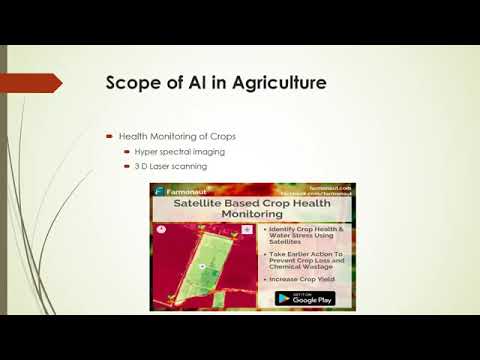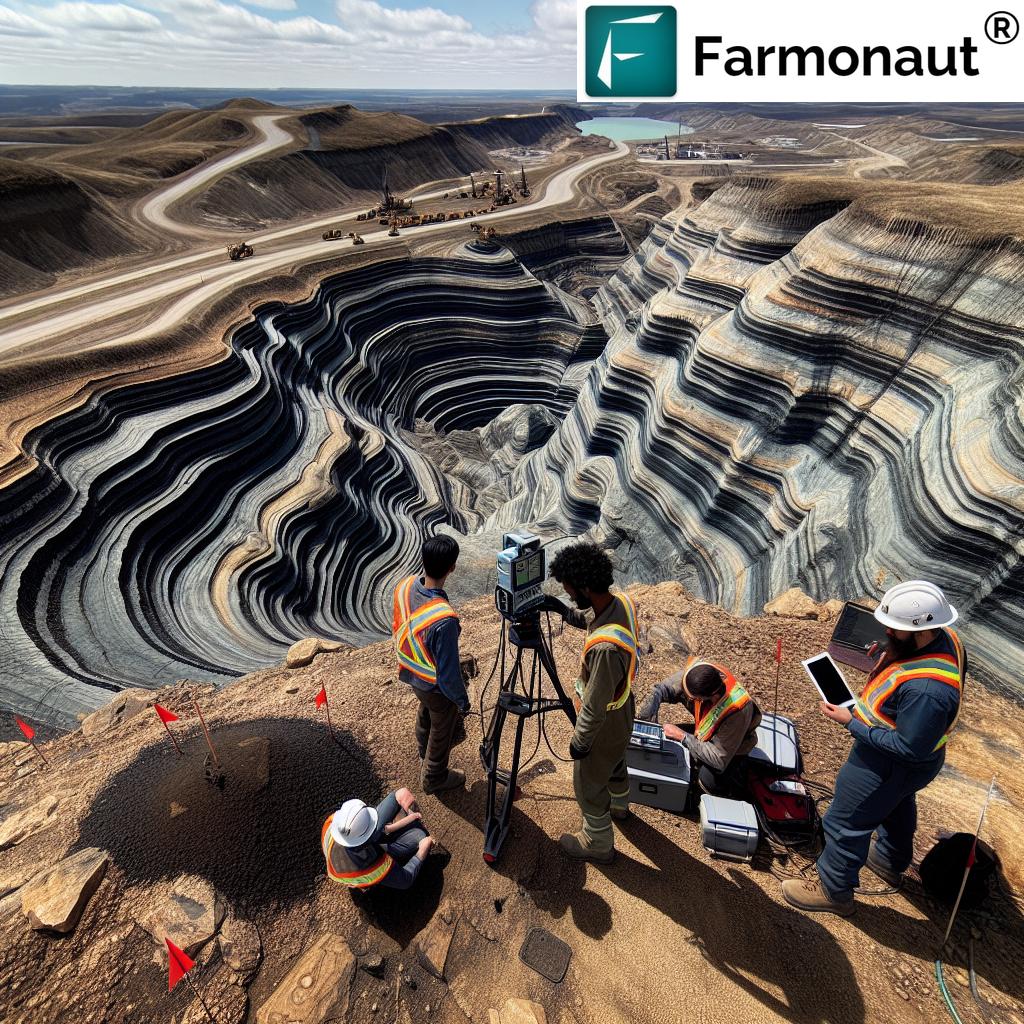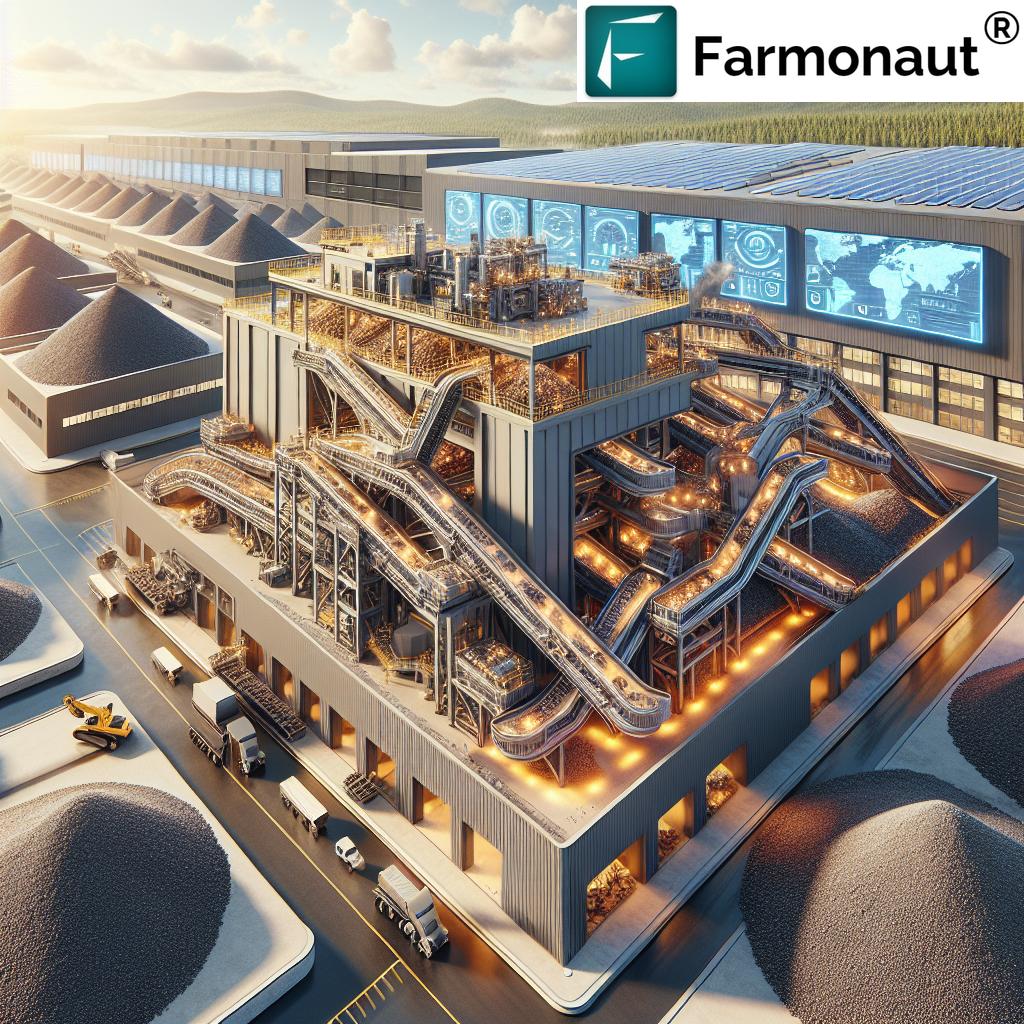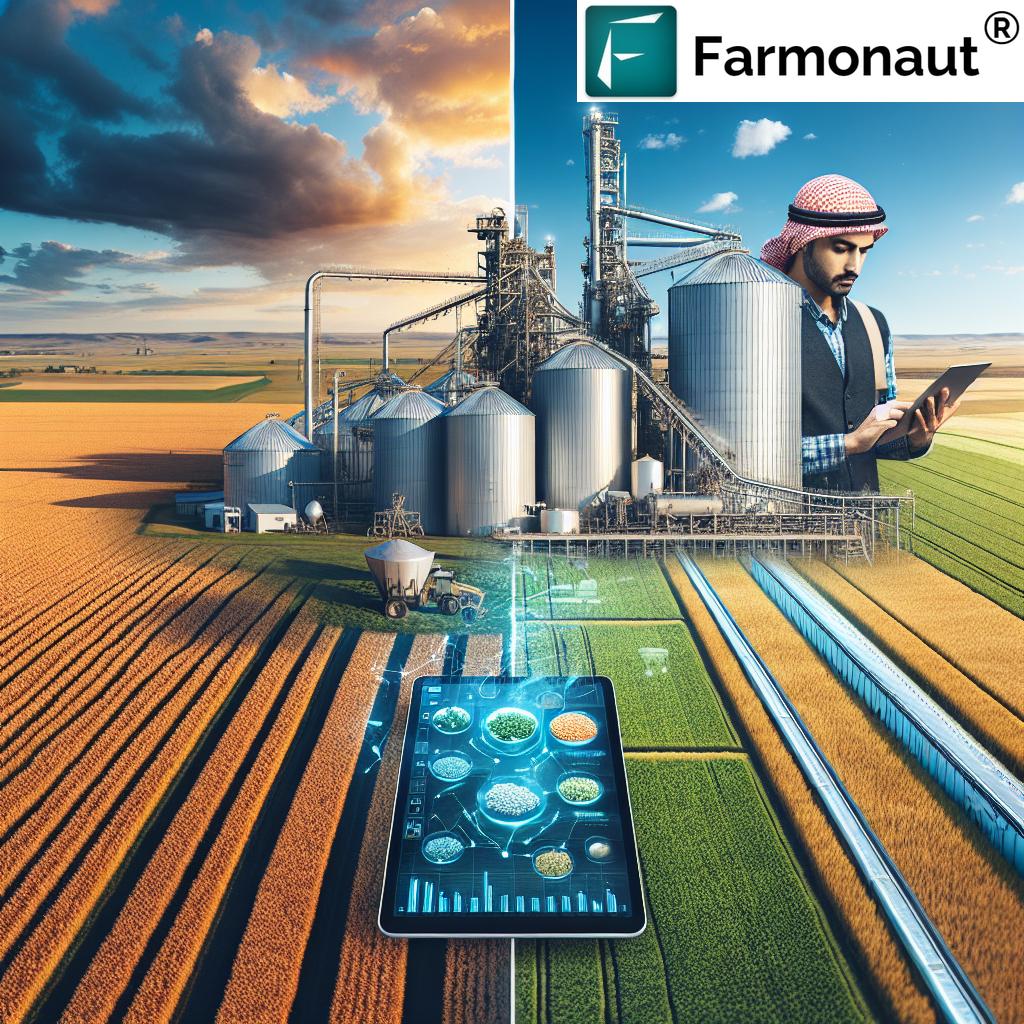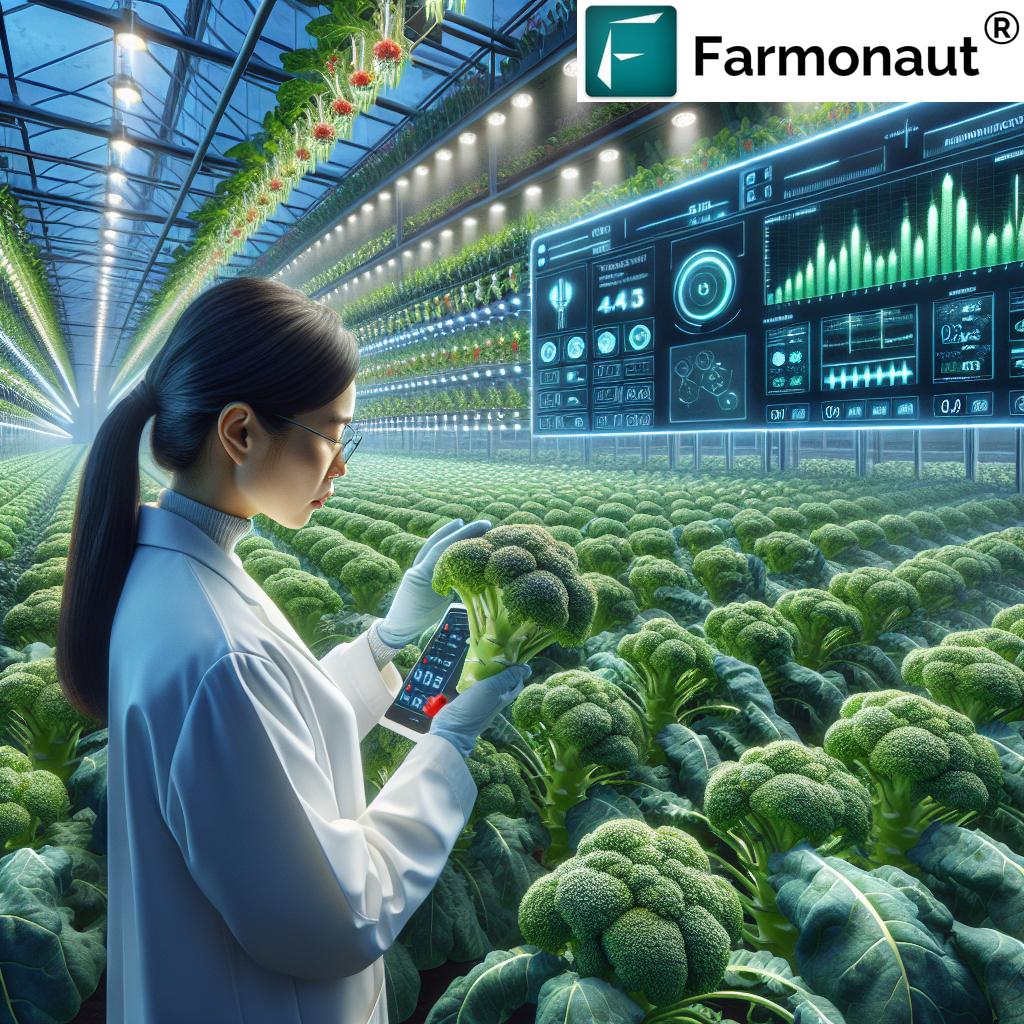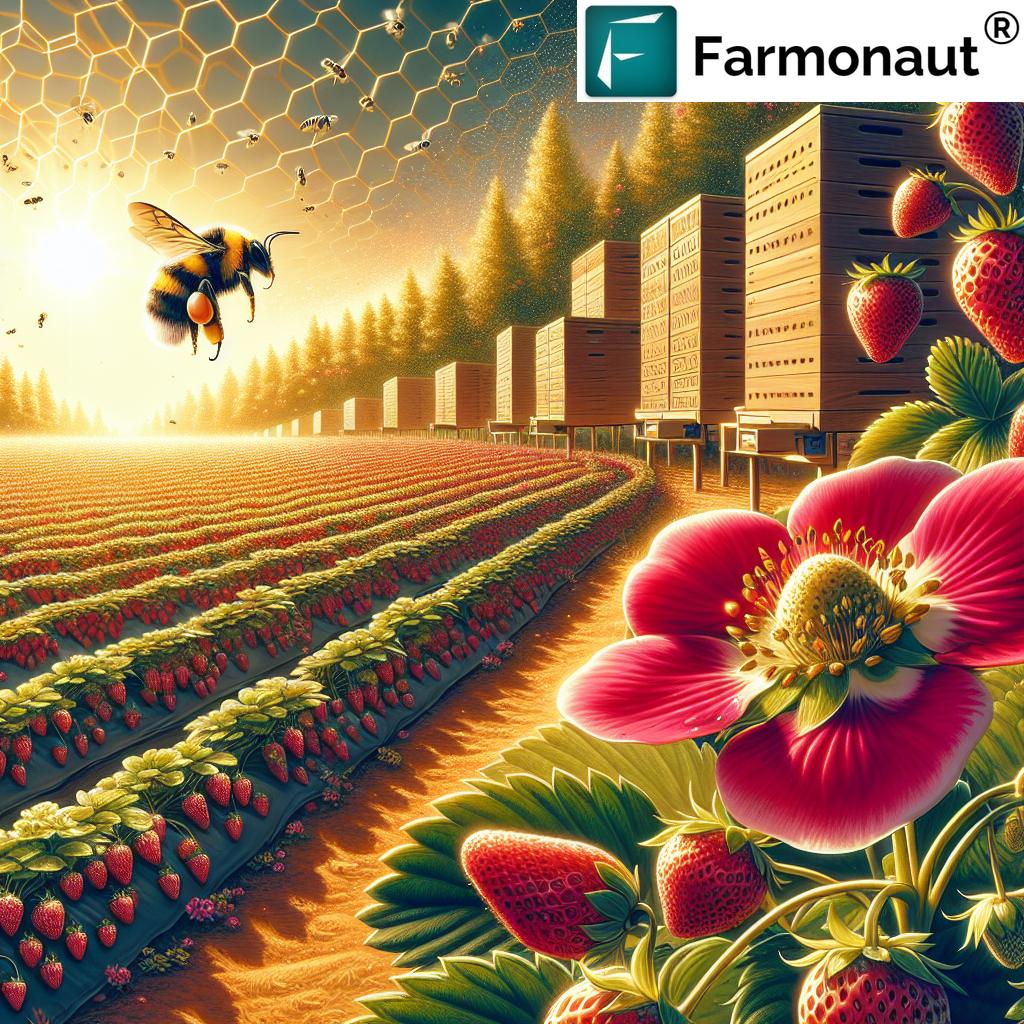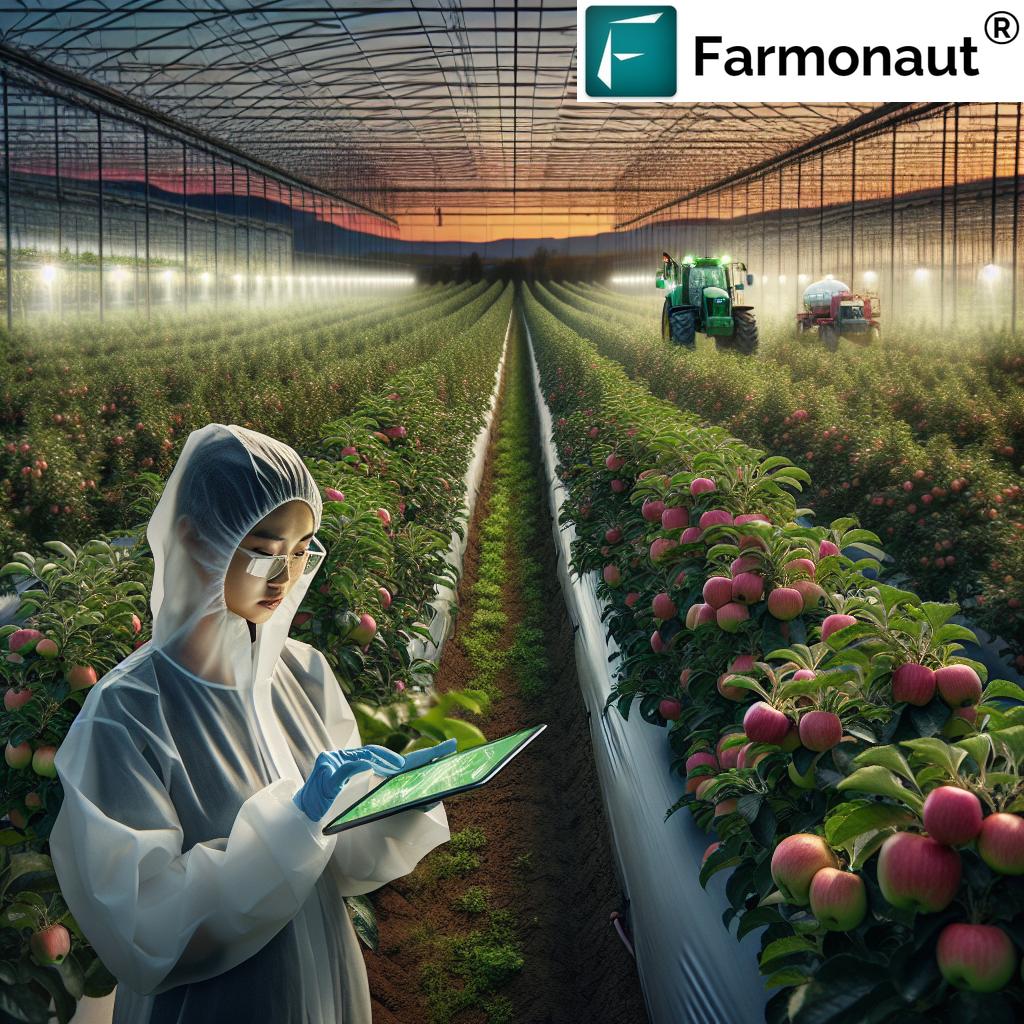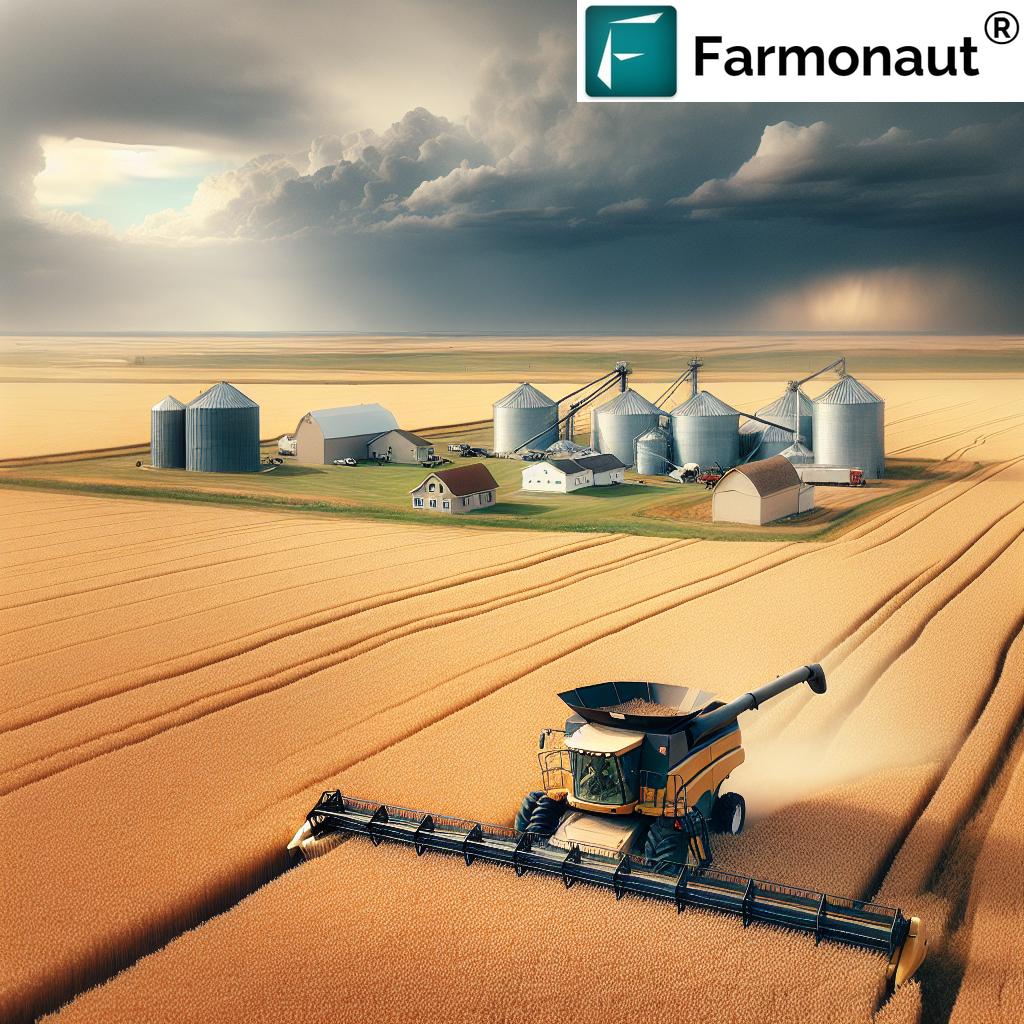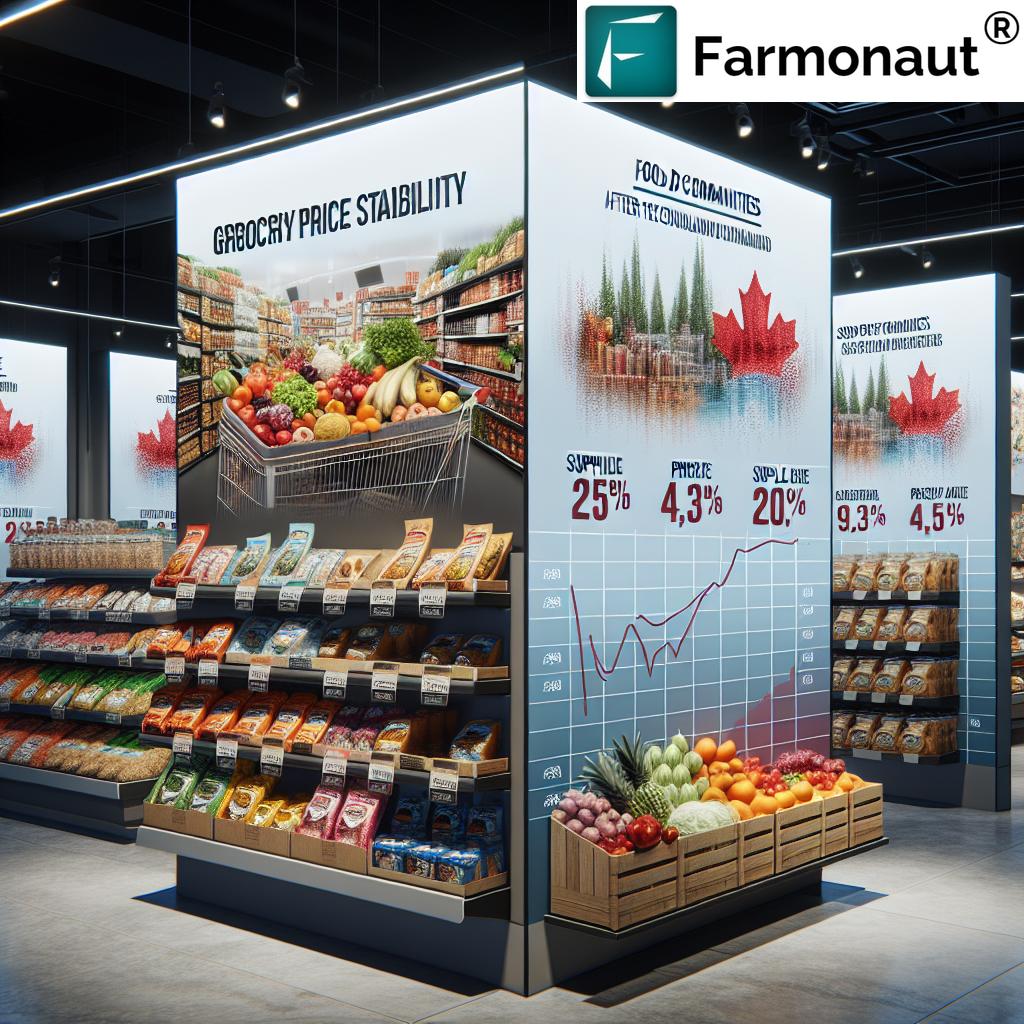Revolutionizing Canadian Greenhouses: Innovative Technologies for Sustainable Crop Management and Energy Efficiency
“Canadian greenhouses using innovative technologies can reduce energy consumption by up to 50% compared to traditional methods.”
In the ever-evolving landscape of modern agriculture, Canadian greenhouses are at the forefront of innovation, embracing cutting-edge technologies to revolutionize crop management and energy efficiency. As we delve into the world of controlled environment agriculture, we’ll explore how these advancements are reshaping the horticultural industry, particularly in Canada’s diverse climate.
The Rise of Innovative Greenhouse Technology in Canada
Canada’s greenhouse sector has experienced remarkable growth in recent years, driven by the need for year-round food production and the increasing demand for locally grown produce. This expansion has been accompanied by a surge in innovative greenhouse technologies that address key challenges faced by growers, including energy consumption, labor efficiency, and sustainable practices.

Energy-Efficient Solutions for Sustainable Horticulture
One of the most significant advancements in greenhouse gardening techniques is the implementation of energy-efficient systems. These innovations not only reduce operational costs but also minimize the environmental impact of greenhouse operations.
- LED Lighting Systems: High-efficiency LED grow lights have revolutionized supplemental lighting in greenhouses. These systems consume up to 40% less energy compared to traditional lighting while providing optimal spectral output for plant growth.
- Smart Climate Control: Advanced environmental control systems utilize AI and machine learning to optimize heating, cooling, and humidity levels. This precision ensures crops receive ideal growing conditions while minimizing energy waste.
- Thermal Screens: Retractable thermal screens act as insulators, reducing heat loss during cold nights and providing shade during hot days, significantly improving energy efficiency.
Hydroponic Vegetable Production: A Game-Changer in Crop Management
Hydroponic systems have gained immense popularity in Canadian greenhouses, offering a soil-less alternative that maximizes space utilization and resource efficiency.
- Nutrient Film Technique (NFT): This system circulates a thin film of nutrient-rich water over plant roots, providing optimal nutrition while conserving water.
- Deep Water Culture (DWC): Plants are suspended in nutrient solutions, promoting rapid growth and reducing the risk of soil-borne diseases.
- Vertical Farming Solutions: By utilizing vertical space, these systems dramatically increase crop density, making them ideal for urban environments with limited land availability.
“Advanced hydroponic systems in greenhouses can increase crop yields by 30-50% while using 90% less water than conventional farming.”
Automation and Robotics in Greenhouse Operations
Crop management automation has become a cornerstone of modern greenhouse operations, addressing labor shortages and improving overall efficiency.
- Robotic Harvesters: These machines use computer vision and AI to identify and harvest ripe produce, reducing labor costs and increasing precision.
- Automated Irrigation Systems: Smart irrigation technologies, including drip systems and misting nozzles, deliver precise amounts of water and nutrients based on real-time crop needs.
- Climate Robots: Mobile units that monitor and adjust environmental conditions throughout the greenhouse, ensuring uniform growing conditions.
Greenhouse Irrigation Systems: Precision and Efficiency
Water management is crucial in greenhouse operations, and innovative irrigation systems are leading the way in conservation and precision.
- Ebb and Flow Systems: These systems periodically flood growing trays with nutrient solution, then drain it back into a reservoir, minimizing water waste.
- Sensor-Driven Irrigation: Soil moisture sensors and weather data integration allow for precise irrigation scheduling, reducing water usage by up to 30%.
- Rainwater Harvesting: Many Canadian greenhouses now incorporate rainwater collection systems, reducing reliance on municipal water supplies and promoting sustainability.
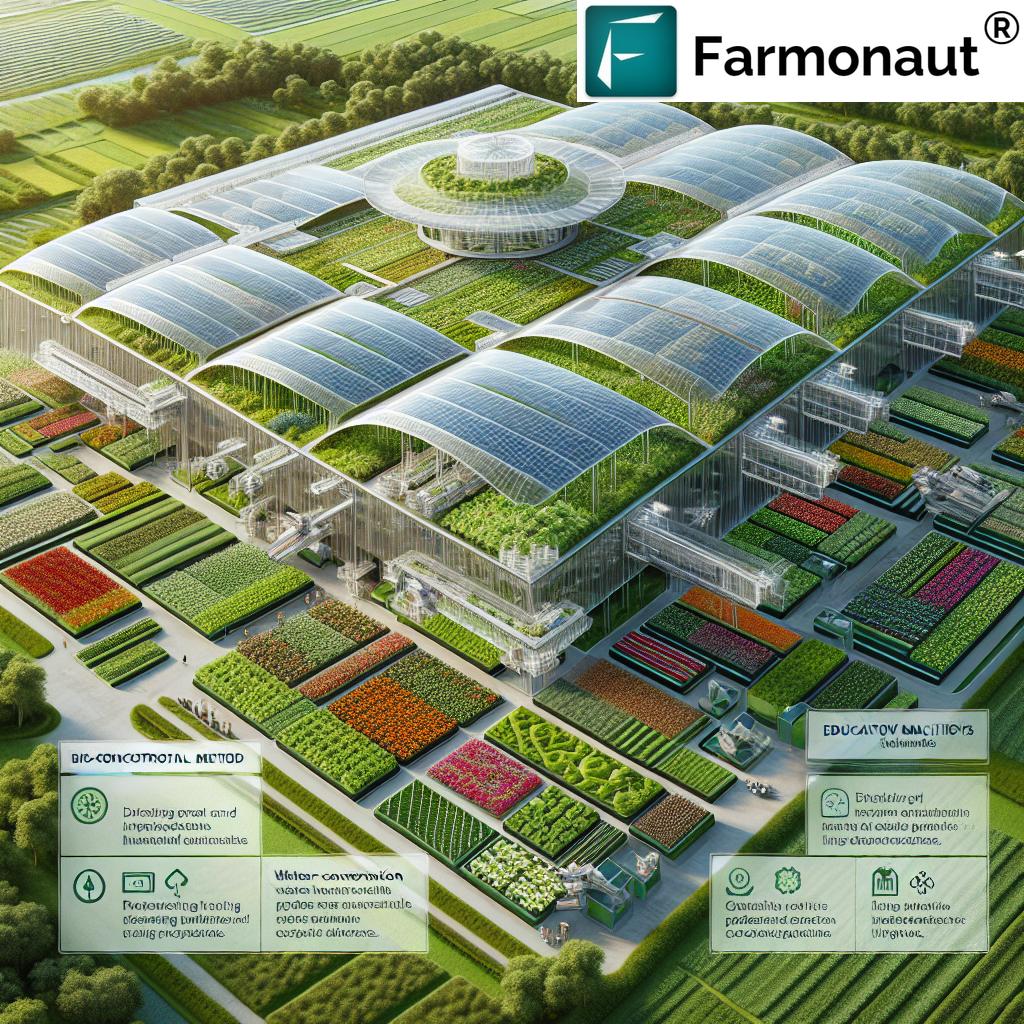
Controlled Environment Agriculture: The Future of Farming
Controlled environment agriculture (CEA) represents the pinnacle of precision farming, allowing growers to manipulate every aspect of the growing environment.
- CO2 Enrichment: By increasing CO2 levels in the greenhouse atmosphere, plants can photosynthesize more efficiently, leading to faster growth and higher yields.
- Spectral Management: Advanced lighting systems allow growers to adjust light spectra throughout the growth cycle, optimizing plant development and even enhancing flavor profiles.
- Microclimate Creation: By carefully controlling temperature, humidity, and air circulation, growers can create ideal microclimates for different crop varieties within the same greenhouse.
Greenhouse Crop Protection: Integrated Pest Management
Protecting crops from pests and diseases is crucial in greenhouse environments. Modern approaches focus on integrated pest management (IPM) strategies that minimize chemical inputs.
- Biocontrols: Beneficial insects and microorganisms are introduced to control pests naturally, reducing the need for chemical pesticides.
- UV-C Light Treatments: Short-wave ultraviolet light is used to control fungal pathogens and insects without leaving chemical residues on crops.
- Climate-Based Disease Prevention: By maintaining optimal humidity levels and air circulation, many common greenhouse diseases can be prevented without chemical interventions.
Vertical Farming Solutions: Maximizing Space and Efficiency
Vertical farming has emerged as a revolutionary approach to greenhouse cultivation, particularly in urban areas where land is at a premium.
- Rotating Vertical Systems: These carousels of growing trays maximize light exposure and space efficiency, ideal for leafy greens and herbs.
- A-Frame Hydroponic Systems: These triangular structures allow for high-density planting of strawberries and other fruiting crops.
- Aeroponic Towers: Plants are grown in vertical columns, with roots misted with nutrient solution, conserving both water and space.
Energy Management and Alternative Fuels in Canadian Greenhouses
As energy costs continue to rise, Canadian greenhouse operators are exploring innovative ways to reduce consumption and incorporate alternative energy sources.
- Cogeneration Systems: These systems produce both heat and electricity, maximizing energy efficiency and reducing reliance on the grid.
- Biomass Heating: Many greenhouses are turning to locally sourced biomass fuels, such as wood pellets or agricultural waste, for sustainable heating solutions.
- Geothermal Heat Pumps: By tapping into the earth’s constant temperature, these systems provide efficient heating and cooling year-round.
The Role of Data Analytics in Modern Greenhouse Management
Data-driven decision-making is transforming greenhouse operations, allowing for unprecedented levels of precision and efficiency.
- Yield Forecasting: Advanced analytics tools help growers predict harvest times and quantities with greater accuracy, optimizing labor and market planning.
- Resource Optimization: By analyzing historical data and real-time inputs, growers can fine-tune their use of water, nutrients, and energy for maximum efficiency.
- Predictive Maintenance: IoT sensors and analytics platforms can predict equipment failures before they occur, minimizing downtime and crop losses.
Innovative Structures and Materials in Greenhouse Design
The physical structure of greenhouses is evolving to meet the demands of modern horticulture and improve energy efficiency.
- Double-Wall Polycarbonate: These advanced coverings provide superior insulation while allowing optimal light transmission.
- Retractable Roof Systems: Allowing for natural ventilation and light control, these systems reduce energy costs and improve crop quality.
- Aerogel-Insulated Panels: Ultra-lightweight and highly insulating, these materials are revolutionizing greenhouse construction in colder climates.
The Impact of Innovative Technologies on Labor and Efficiency
As the greenhouse industry continues to grow, addressing labor challenges through technology has become increasingly important.
- Automated Grading and Packing: Vision systems and robotics streamline the post-harvest process, reducing labor needs and improving consistency.
- Mobile Crop Management Platforms: Tablet-based systems allow workers to input data and receive instructions in real-time, improving efficiency and accuracy.
- Virtual Reality Training: Advanced training programs use VR technology to educate workers on complex greenhouse systems and procedures.
Sustainable Practices in Canadian Greenhouse Horticulture
Sustainability is at the forefront of innovation in the greenhouse sector, with a focus on reducing environmental impact while maintaining productivity.
- Circular Economy Initiatives: Many greenhouses are implementing closed-loop systems for water and nutrient recycling, minimizing waste and environmental impact.
- Biodegradable Growing Media: Sustainable alternatives to traditional peat-based media are gaining popularity, reducing the carbon footprint of greenhouse operations.
- Integrated Renewable Energy: Solar panels and wind turbines are being incorporated into greenhouse designs, providing clean energy for operations.
The Future of Canadian Greenhouse Innovation
As we look to the future, several emerging technologies are poised to further revolutionize the greenhouse industry in Canada:
- AI-Driven Crop Management: Machine learning algorithms will optimize every aspect of plant growth, from nutrition to harvest timing.
- Nanotechnology in Plant Science: Nanoparticles could enhance nutrient uptake and provide targeted pest control, reducing chemical inputs.
- Gene Editing for Climate Resilience: CRISPR technology may lead to the development of crop varieties specifically adapted to greenhouse environments.
Farmonaut’s Role in Advancing Greenhouse Technology
At Farmonaut, we’re committed to supporting the advancement of greenhouse technology through our innovative satellite-based farm management solutions. Our platform provides valuable tools for greenhouse operators, including:
- Real-time Crop Health Monitoring: Our satellite imagery analysis helps growers identify potential issues before they become visible to the naked eye.
- AI-Powered Advisory System: Our Jeevn AI provides personalized recommendations for optimal crop management in controlled environments.
- Resource Management Tools: We offer solutions for efficient water and energy use, crucial for sustainable greenhouse operations.
To learn more about how Farmonaut can support your greenhouse operations, visit our web app or explore our API for custom integrations.
Innovative Technologies in Canadian Greenhouses: Impact and Efficiency
| Technology | Energy Efficiency | Crop Yield Increase | Labor Reduction |
|---|---|---|---|
| LED Lighting Systems | 40% improvement | 15-25% | 10% |
| Automated Climate Control | 30% improvement | 20-30% | 25% |
| Hydroponic Systems | 20% improvement | 30-50% | 40% |
| Vertical Farming Solutions | 50% improvement | 200-400% | 60% |
Embracing Digital Solutions for Greenhouse Management
In today’s digital age, greenhouse operators are increasingly turning to mobile and web-based applications to streamline their operations. Farmonaut offers a range of digital tools designed specifically for the agriculture sector:
- Mobile App for On-the-Go Monitoring: Our Android and iOS apps allow growers to access critical data anytime, anywhere.
- Web Application for Comprehensive Analysis: Our web platform provides in-depth analytics and reporting for strategic decision-making.
- API Integration for Custom Solutions: For tech-savvy growers, our API allows for seamless integration with existing greenhouse management systems.
Explore our digital solutions:
Leveraging Satellite Technology for Greenhouse Management
While greenhouses provide controlled environments, external factors still play a crucial role in overall management. Farmonaut’s satellite-based monitoring services offer valuable insights for greenhouse operators:
- Regional Climate Trends: Our satellite data provides a broader context for local weather patterns, helping growers anticipate and prepare for seasonal changes.
- Water Resource Management: Satellite imagery can help track water availability in the surrounding area, crucial for sustainable water use planning.
- Supply Chain Optimization: By monitoring crop conditions in outdoor growing areas, greenhouse operators can better plan their production to complement market supply.
The Role of Artificial Intelligence in Greenhouse Agriculture
Artificial Intelligence is revolutionizing greenhouse management, offering unprecedented levels of precision and efficiency. Farmonaut’s AI-driven solutions are at the forefront of this transformation:
- Predictive Analytics: Our AI models analyze historical data and current conditions to forecast potential issues before they arise.
- Automated Decision Support: The Jeevn AI system provides tailored recommendations for crop management, helping growers optimize their operations.
- Machine Learning for Continuous Improvement: Our systems learn from each growing cycle, continuously refining recommendations for better outcomes.
Sustainable Farming Practices for Canadian Greenhouses
Sustainability is not just a buzzword; it’s a necessity for the future of agriculture. Canadian greenhouses are leading the way in implementing sustainable practices:
- Energy-Efficient Designs: Modern greenhouse structures incorporate energy-saving materials and designs to reduce overall consumption.
- Water Recycling Systems: Advanced filtration and sterilization technologies allow for the reuse of irrigation water, significantly reducing waste.
- Integrated Pest Management: Biological controls and targeted interventions minimize the use of chemical pesticides, promoting a healthier ecosystem.
Farmonaut supports these sustainable practices through our comprehensive monitoring and management tools, helping growers make informed decisions that benefit both their operations and the environment.
The Future of Canadian Greenhouse Agriculture
As we look to the future, the Canadian greenhouse industry is poised for continued growth and innovation. Key trends to watch include:
- Urban Integration: Vertical farming and rooftop greenhouses will bring food production closer to urban consumers.
- Automation and Robotics: Increased use of automated systems will address labor shortages and improve efficiency.
- Customized Crop Varieties: Development of plant varieties specifically bred for greenhouse environments will optimize production.
- Circular Economy Models: Greenhouses will increasingly adopt closed-loop systems, minimizing waste and maximizing resource efficiency.
Farmonaut is committed to supporting this evolution through ongoing research and development of our satellite-based monitoring and AI advisory systems.
Conclusion: Embracing Innovation for a Sustainable Future
The Canadian greenhouse industry stands at the forefront of agricultural innovation, leveraging cutting-edge technologies to address the challenges of food security, climate change, and resource conservation. By embracing these advancements, growers can significantly improve their crop management, energy efficiency, and overall sustainability.
As we continue to develop and refine these technologies, the future of greenhouse agriculture in Canada looks brighter than ever. With tools like Farmonaut’s satellite-based monitoring and AI-driven insights, growers have unprecedented access to data and analytics that can drive informed decision-making and optimize operations.
We invite you to explore how Farmonaut can support your greenhouse operations. Visit our web app or check out our API developer docs to learn more about integrating our advanced agricultural solutions into your greenhouse management strategy.
Farmonaut Subscription Options
Frequently Asked Questions
Q: How can innovative greenhouse technologies improve energy efficiency?
A: Innovative technologies like LED lighting systems, smart climate control, and thermal screens can significantly reduce energy consumption in greenhouses. For example, LED lights can use up to 40% less energy than traditional lighting, while smart climate control systems optimize heating and cooling based on real-time conditions.
Q: What are the benefits of hydroponic systems in greenhouse vegetable production?
A: Hydroponic systems offer numerous benefits, including increased crop yields (30-50% higher), reduced water usage (up to 90% less than conventional farming), better space utilization, and decreased risk of soil-borne diseases. These systems also allow for precise control of nutrient delivery, resulting in optimized plant growth and quality.
Q: How is automation improving labor efficiency in greenhouse operations?
A: Automation technologies such as robotic harvesters, automated irrigation systems, and climate robots are significantly reducing labor requirements while improving precision and consistency in greenhouse operations. These systems can perform tasks more efficiently than human workers and operate 24/7, leading to increased productivity and reduced labor costs.
Q: What role does artificial intelligence play in modern greenhouse management?
A: AI plays a crucial role in optimizing greenhouse operations through predictive analytics, automated decision support, and continuous learning. AI systems can analyze vast amounts of data to forecast potential issues, provide tailored crop management recommendations, and continuously refine their insights based on each growing cycle.
Q: How can Farmonaut’s satellite-based solutions benefit greenhouse operators?
A: Farmonaut’s satellite-based solutions provide valuable insights for greenhouse operators, including regional climate trend analysis, water resource management support, and supply chain optimization. These tools help growers make informed decisions about resource allocation, production planning, and overall greenhouse management strategies.







